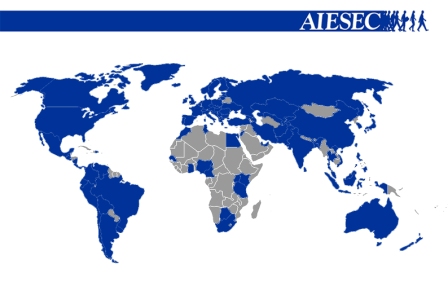AIESEC in Numbers

If you are unsure what some of the abbreviations mean please visit the glossary.
Last update July 2011 (SOGA and MyAIESEC.net data)
|
1948 |
The year AIESEC was founded |
|
60.000 Members |
The number of young people who are currently Experiencing AIESEC |
|
110 Countries/territories |
The number of countries we have AIESEC activities in Several countries/territories were approved to join the global network at IC 2008 in Brazil and IPM 2009 Rome, so we now have AIESEC activities in 110 countries |
|
2,100 Universities |
We are currently present at 2,100 universities Although we have 800 Local Committees, many of these have presence in numerous universities. |
|
470 Conferences |
We run more than 470 conferences each year at national, regional and global level. |
|
16,000 Exchanges |
We provide unique exchange experiences for over 16,000 youth annually This is given our latest exchange statistics. |
|
4.000 Partners |
We partner with over 4,000 organizations globally These include sponsors, TN takers, other partners, etc. (This number requires to be updated) |
|
20,000 Leadership opportunities |
Each year, over 22,000 leadership opportunities are available Youth around the world engage in all sorts of projects in leading a team of at least three people for more than three months. This number is constantly increasing. |
|
945,0000 Alumni |
We have impacted over 945,000 people in society through AIESEC This number is calculated taking into account an average of 15.000 members per year (taking into account low and high years in terms of membership) throughout our existence. |
|
800 Local Committees |
We have 800 Local Committees The actual number is 800, and as you can see from the number above, many LC's are covering several universities. |
|
6 Growth Networks |
Our network is divided into six Growth Networks |
